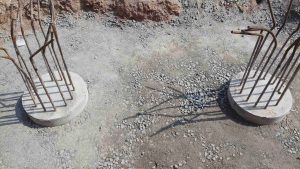In assessing the load-bearing capacity of foundations, two popular testing methods are often used; the Pile Integrity Test (PIT) and the Pile Load Test (PLT). Understanding the differences between these two methods, their applications, and their advantages can significantly impact the efficiency and safety of construction projects. Let’s delve into the specifics to help you make informed decisions.
Pile Integrity Test (PIT)
The Pile Integrity Test (PIT) is a non-destructive testing method used to evaluate the structural integrity of deep foundations such as piles. This method employs stress waves, which are introduced into the pile using a small impact. The wave’s response is analyzed to identify defects, inconsistencies, or variations in the pile’s material or geometry.
Advantages of PIT:
- Non-Destructive: PIT does not harm the structure, making it ideal for projects requiring post-construction evaluations.
- Speed and Efficiency: Results are quickly obtained, allowing for timely decision-making.
- Cost-Effectiveness: Compared to other methods like static load testing, PIT is more affordable while delivering reliable results.
- Wide Application: It can be performed on existing structures, ensuring that the integrity of aged piles is maintained.
Limitations:
- PIT is primarily limited to detecting major defects and may not provide a comprehensive analysis of pile load capacity.
- The accuracy of results can depend on the skill of the operator and the quality of equipment used.
PIT is an excellent choice for projects where quick assessments of pile integrity are needed without disrupting ongoing operations.
Pile Load Test (PLT)

The Pile Load Test (PLT) is a field test used to determine the load-bearing capacity of deep foundations, such as piles. This test involves applying incremental loads to a test pile and measuring its settlement under each load step. The results are critical for verifying design assumptions and ensuring the safety of the foundation.
Advantages of PLT:
- Direct Assessment of Load Capacity: PLT provides precise data about the pile’s ability to bear vertical and lateral loads.
- Validation of Design: It confirms whether the pile meets the specified load requirements, ensuring structural reliability.
- Customizable Load Testing: Test conditions can be tailored to simulate actual loading scenarios specific to the project.
Limitations:
- PLT can be expensive and time-consuming, especially for large projects.
- Logistical challenges may arise due to the need for heavy equipment and specialized setups.
- The test is typically limited to specific piles and does not provide a holistic view of all piles in a project.
PLT is indispensable for projects involving deep foundations, where accurate data about the pile’s performance is crucial.
Key Differences Between PIT and Pile Load Test (PLT)
| Aspect | Pile Integrity Test (PIT) | Pile Load Test (PLT) |
| Method | Non-destructive stress wave analysis | Direct loading of a pile to measure settlement |
| Purpose | Integrity and defect detection in piles | Load-bearing capacity and settlement characteristics |
| Application | Deep foundations | Deep foundations |
| Cost and Time | Low cost and quick | Higher cost and time-intensive |
| Depth of Analysis | Effective for assessing defects and integrity | Comprehensive load capacity testing |
Both tests serve specific roles, and their selection depends on the project’s requirements. For instance, while PIT is indispensable for assessing the condition of piles, PLT provides valuable insights into the pile’s load-bearing potential.
How to Choose the Right Test for Construction Projects

When selecting between PIT and PLT for construction projects, consider these factors:
- Foundation Type: Both tests are suitable for deep foundations, but their purposes differ. Use PIT for integrity assessments and PLT for load capacity validation.
- Budget and Time: Projects with tight schedules and limited budgets may benefit from the cost-effectiveness of PIT. However, for critical load-bearing structures, PLT is invaluable.
- Project Design Requirements: Understanding the design and expected loading conditions can guide you in choosing the most relevant test.
Integrating the right geotechnical testing method early in the project ensures structural stability, safety, and adherence to design specifications.
Navigating the complexities of geotechnical testing requires expertise, precision, and state-of-the-art technology. AOA Geo-Net excels in providing tailored geotechnical solutions for construction projects of all scales. With a team of seasoned professionals and cutting-edge equipment, we ensure that your foundation is built using reliable data.
Contact us today to explore the best strategies for your next construction project.




